AirPods Not Working? How to Troubleshoot & Fix AirPods
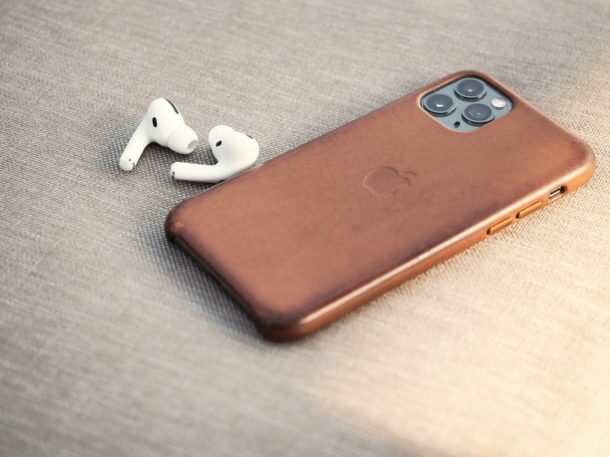
There’s no doubt that Apple’s AirPods are among the most popular and best-selling wireless headphones available in the market today. Although AirPods work seamlessly with Apple devices for the most part, they could stop working all of a sudden due to a variety of issues. If your AirPods are not working, read on to learn how you can troubleshoot and help to resolve these issues.
In rare cases, you might experience connectivity issues, or you might have trouble getting your brand new pair of AirPods or AirPods Pro to work with your iPhone. Or sometimes, when you’re listening to music, it’ll stop delivering audio randomly or get disconnected. One of your AirPods could stop functioning all of a sudden too. This could be due to various reasons, ranging from battery drain to a faulty Bluetooth connection. Thankfully, this is pretty easy to resolve in most cases.
If you’re one of those unlucky people who’re facing issues with AirPods, there’s no need to contact official Apple support just yet. Because in this article, we’ll walk you through the necessary steps to quickly troubleshoot and fix AirPods and its connectivity issues you may come across.
How to Troubleshoot & Fix AirPods
Whether you’re using the regular AirPods or AirPods Pro, you can follow these basic troubleshooting methods whenever you’re facing any connectivity-related issues.
1. Check for Software Updates
If you’re using the first-generation AirPods, your device needs to be running iOS 10 or later. Second-generation AirPods require iOS 12.2 or later to function properly. As for AirPods Pro, your device needs to be running at least iOS 13.2 / iPadOS 13.2 to take full advantage of noise-cancelling and transparency modes. In other words, make sure you’re on the latest available version for your iPhone or iPad by heading over to Settings -> General -> Software Update. If you have any updates, tap on “Install Now”.

2. Check if Bluetooth is ON
Although AirPods seamlessly connect with Apple devices, it relies on a Bluetooth connection to deliver audio to your iPhone or iPad. So, make sure you didn’t accidentally disable Bluetooth on your device by accessing your Control Center. If you see it’s disabled, tap on the Bluetooth toggle to quickly turn it back on.

3. Check AirPods Battery
This might sound silly, but you might have put your AirPods in a drained out charging case. Or, the issue might be with your charging case and not the AirPods itself. So, put your AirPods back in the case, connect it to a power source for an hour and then try listening to music on your AirPods to see if it’s working again. You can see the battery percentage of your AirPods within the iOS Control Center by tapping on the icon located at the top-right corner of the Music card. Alternatively, you can swipe right on the home screen to check your battery.
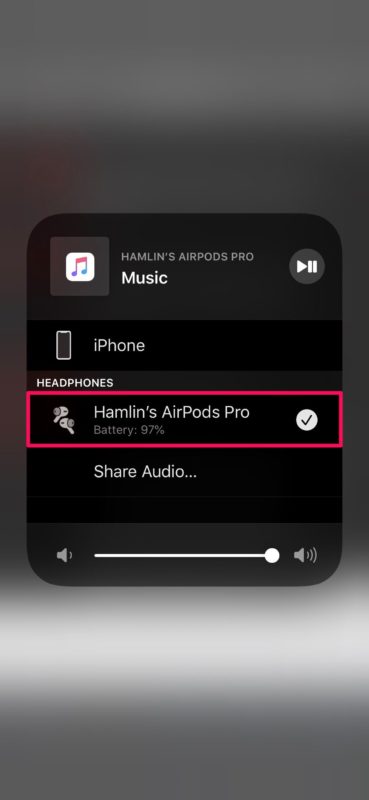
4. Make Sure Your Bluetooth Device is Connected
Although an already paired AirPods should automatically connect to your iPhone or iPad as soon as you take it out of the case, sometimes the connection fails to establish and manual connection might be required. It’s just like connecting any other Bluetooth device. Simply head over to Settings -> Bluetooth and tap on your AirPods from the list of Bluetooth devices. Once it shows connected, try listening to a song and see if it’s working properly.
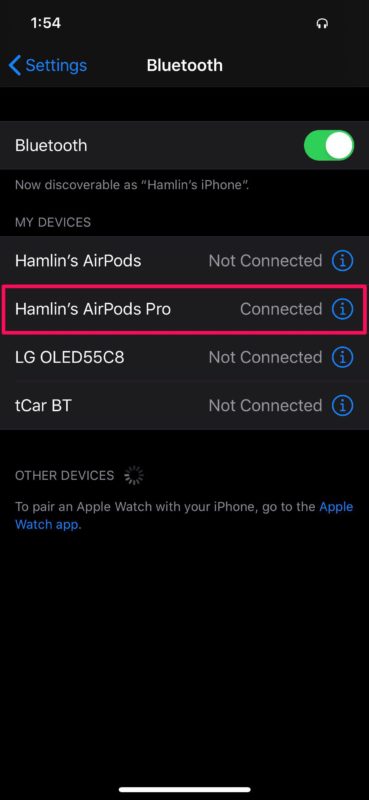
5. Re-Pair AirPods with iPhone / iPad
If the previous step didn’t resolve your issue, you’ll need to re-pair your AirPods. In order to do this, head over to Settings -> Bluetooth on your iOS device like you did in the previous step and tap on the “i” icon right next to connected AirPods. Now, scroll down and tap on “Forget This Device”.
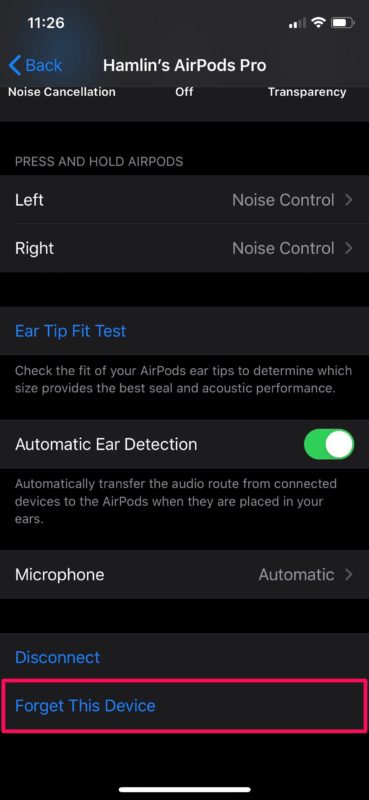
Once you’re done, you can proceed to re-pair your AirPods. Put both of your AirPods back in the charging case, open the lid and hold the physical button on the back of the case for a few seconds to enter pairing mode. You’ll see your AirPods show up in the list of available Bluetooth devices. Connect and see if your AirPods are functioning properly now.
If you want more info on pairing AirPods Pro with iPhone or iPad, Mac, Android, Windows PC, and setting up regular AirPods too, check out those articles.
6. Reset Your AirPods
If the above method didn’t work in your favor, you’ll need to reset your AirPods. This is more like your last resort if the issue is with your AirPods and not the device you’re trying to connect them to. Forget your device like you did in the previous step and put your AirPods back in the case. Now open the lid and hold the button on the back of your case for about 15 seconds until the LED light on the case starts flashing amber. Now, you’ll need to go through the initial setup process and see if your AirPods are functioning properly.
7. Reset Network Settings
Don’t give up just yet. In rare cases, common networking issues with your iPhone or iPad could likely be the reason why you’re facing connectivity issues with one of your AirPods. However, this can be easily resolved by resetting your network settings. Be mindful that you’ll lose your saved Bluetooth connections, Wi-Fi networks and passwords once you reset these settings. In order to do this, go to Settings -> General -> Reset -> Reset Network Settings on your iOS device.
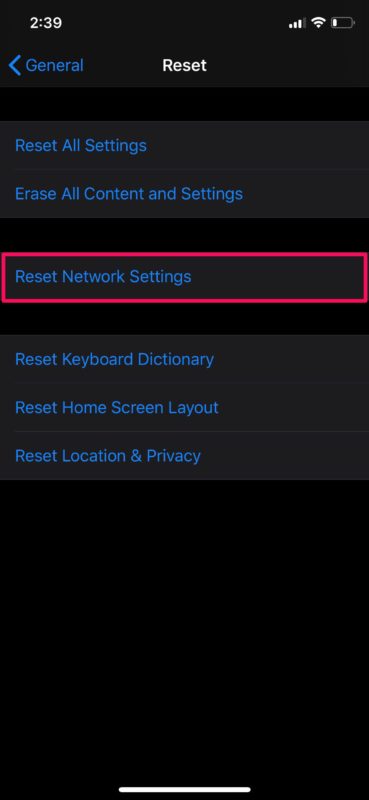
8. Reboot Your iPhone / iPad
The issue could be your iPhone or iPad and not the AirPods itself. So, the last thing you’d want to try is simply to restart your iOS device. This can be done by just turning off your device and powering it back on again. If you’re using an iPhone or iPad without a physical home button, hold the side button and the volume up button to access the shut down menu. However, if you’re using an iPhone or iPad with a physical home button, you just need to hold down the power button. You can shut down your iPhone or iPad through Settings too.
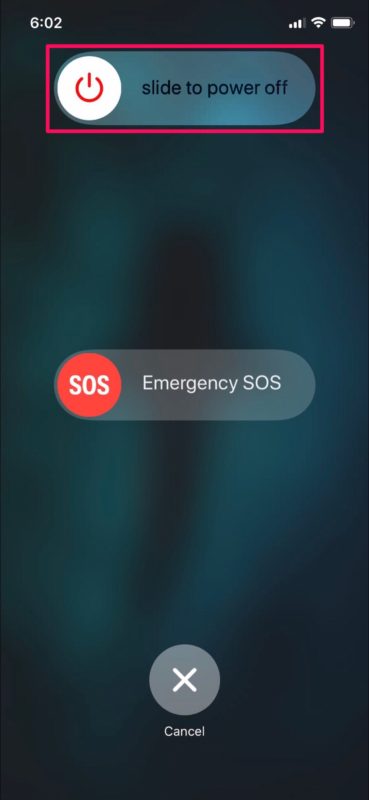
By now, you should’ve resolved the issue you were facing with your AirPods.
If none of the above troubleshooting methods worked in your instance, then there’s a pretty good chance that it’s a hardware-related issue. However, you could check the microphone and speaker meshes on each AirPod for debris and clean them, if necessary. Check for any signs of physical damage. If you dropped your AirPods in the pool or listened to music while walking in the rain recently, water damage could likely be the reason as well. For all hardware-related issues, make sure to contact Apple support for further assistance.
Unless there are any signs of physical damage, Apple would be more than happy to replace your faulty AirPods with a working pair, free of charge. However, your unit needs to be within the warranty period. If not, a single AirPod replacement costs $69 and a single AirPod Pro replacement costs $89.
We hope you managed to get your AirPods to work again. Which of these troubleshooting methods we discussed here worked for you? If not, did you find another solution? Did you contact official Apple support to check for hardware-related problems? Do share your experience in the comments section down below.


Off topic, but what phone case is that in the picture?